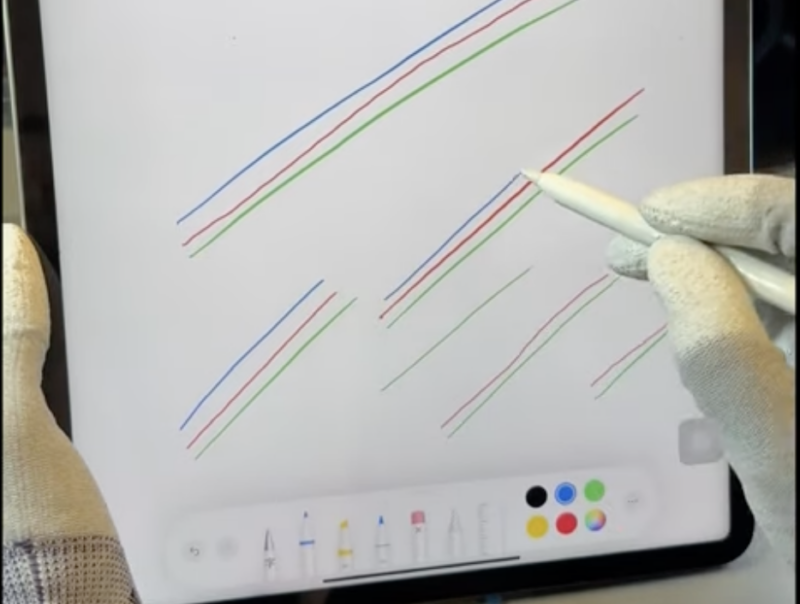-
 chevron_right
chevron_right
Apple Pencils can’t draw straight on third-party replacement iPad screens
news.movim.eu / ArsTechnica · Friday, 28 July, 2023 - 15:05

Enlarge / iCorrect's attempts to draw a straight line on an iPad Pro with a third-party replacement screen led them to look at the screen's embedded chips for parts-pairing problems. (credit: iCorrect UK )
The latest part of an Apple device to demand a repair by its maker appears to be the screens on newer iPads. Reports from repair shops and customers suggest that Apple Pencils no longer work properly on non-genuine Apple screens, as they draw squiggly lines on a diagonal instead of straight.
Ricky Panesar, CEO of UK repair firm iCorrect, told Forbes that screens replaced on newer iPad Pros (fifth and sixth-generation 12.9-inch and third and fourth-generation 11-inch models) do not deliver straight lines when an Apple Pencil is used to draw at an angle. "They have a memory chip that sits on the screen that's programmed to only allow the Pencil functionality to work if the screen is connected to the original logic board," Panesar told Forbes.
A Reddit post from May 23 from a user reporting "jittery" diagonal lines from an Apple Pencil on a newly replaced iPad mini screen suggests the issue may affect more than just the Pro line of iPads.

